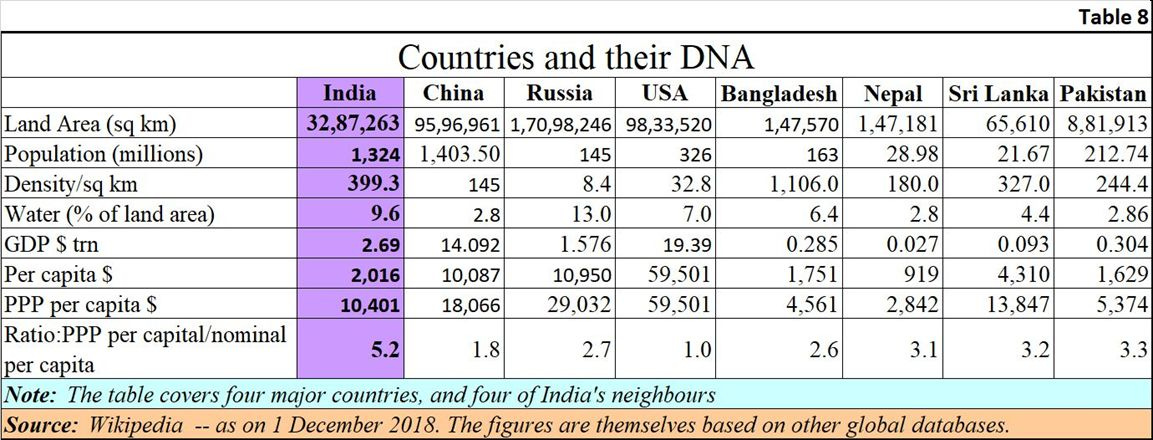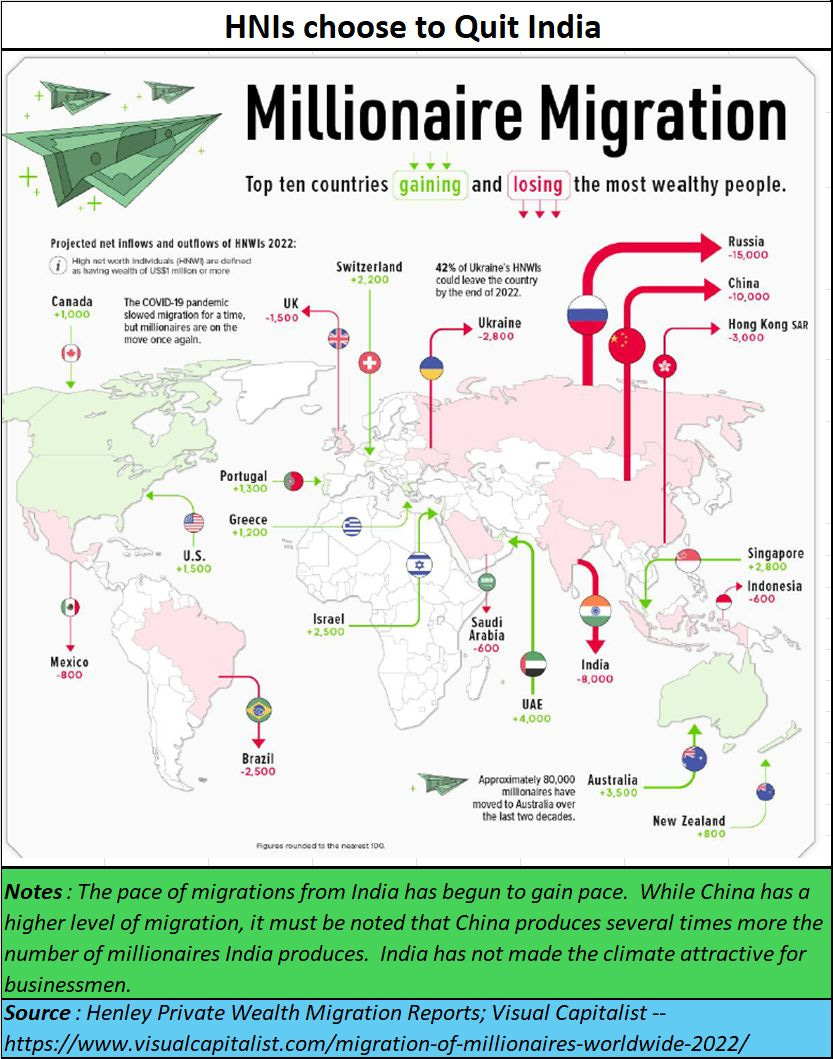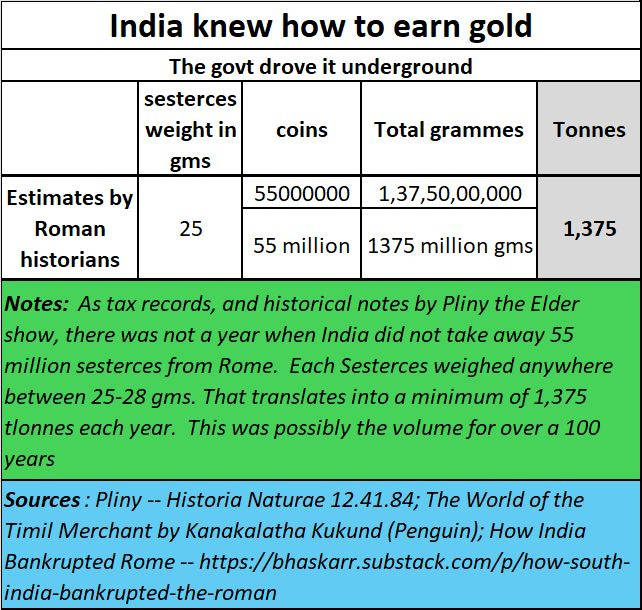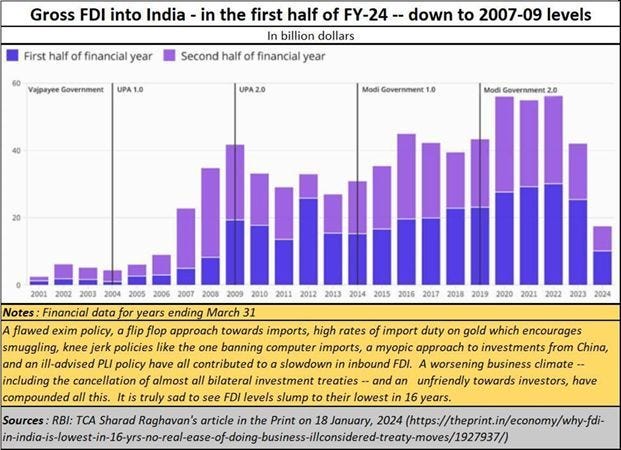India spurns its advantages
Fact vs fiction about advantages and strengths can be quite jarring for India
Policy Watch
India makes tall claims. However, a look at hard numbers shows how it has spurned natural advantages that it had. The country cannot prosper if suitable policies to redress them are not introduced immediately.
India had three natural advantages. But data shows that it has spurned all of them.
People – often touted as the demographic dividend.
Water – India has more water than all its neighbours, bet it has misused, abused, and squandered this advantage.
A history of generating wealth – India illtreats its money makers and wealth generators.
The list could be longer, but for the sake of brevity, the above three should suffice.
India’s biggest crime is disdain for its own people.
People
School education
Nowhere is India’s disdain visible more than in the education sector – especially when it comes to schools (free subscription -- https://bhaskarr.substack.com/p/the-state-of-education-in-india).
Take school education first. As many as 70% of India’s students go to government schools. And that is where the malaise is the most worrisome. Going by the figures the government presented before the Parliament,
· 52% of government schools did not have science laboratory facilities. So, how do the students learn science?
· 78% of the schools were without internet facilities or smart classrooms.
· Worryingly, over 1.17 lakh schools had just one teacher – for all subjects and all levels.
Such abject focus on school education has its consequences which are dire. The ASER report 2023 (https://www.freepressjournal.in/education/1-in-4-high-schoolers-cannot-read-half-cannot-do-maths-aser-2023-report) which was made public in January 2024 showed that when 14–18-year-old children in rural India were surveyed, it was observed that
· 1 In 4 high schoolers cannot read,
· Half cannot do maths:
· 26.4% of the youths cannot fluently read Class 2-level text in their mother tongue, with girls doing better than boys.
· Only a little over half (57%) can read sentences in English, of which three-quarters (73.5%) can tell their meanings.
· Only 43.3% of 14–18-year-olds were able to solve a three-digit by one-digit division problems correctly, a skill they were supposed to acquire by Classes 3 and 4.
Higher education
When it comes to higher education, the most telling apathy is visible from numbers of students going overseas for higher studies (free subscription -- https://bhaskarr.substack.com/p/the-state-of-higher-education-in?sd=pf).
Many teachers’ posts lie vacant even while the country has poor employment.
One reason is that good teachers are not available. But the truth is that teachers are so poorly paid that the first choice for most fresh postgraduates is to seek jobs in banks and industries rather than with educational institutions. The government burdens teachers with non-teaching work, further making the life of good teachers miserable. Finally, the politicisation of education has meant that more attention is paid to non-core subjects than to core subjects that lead to employment.
Today, India has created conditions which compel it to spend at least Rs.2.7 lakh crore each year on its students going overseas to gain from quality education. India sees around 7.5 lakh students going overseas each year. Of this, number medical education accounted for 108,890 students in 2022 – based on students who have declared their purpose for going overseas.
Since all students do not declare their real purpose of travelling overseas, this number could be a lot bigger. Moreover, even this number may not take into account students who have stayed on for further studies without declaring this to the government.
Effectively, India subsidises at least 240 countries around the world by transferring around Rs.2.7 lakh crore overseas (https://www.mea.gov.in/rajya-sabha.htm?dtl/36215/QUESTION_NO861_STUDENTS_STUDYING_ABROAD). India thus pays for jobs overseas (for jobs relating to teaching, catering, real estate development etc). This money could have been spent in India – had it provided for better educational facilities.
In the case of doctors, the situation is grim. The quality of medical education has been deteriorating rapidly. Worse, there are not enough medical seats even for creating such doctors (Free subscription: https://bhaskarr.substack.com/p/medical-education-in-india-is-growing). Today, even as much of the rich world is watching its populations ageing, the biggest market for recruitment is taking care of the aged. This requires both male and female nurses, along with language training to suit the recipient country. India still hasn’t woken up to this to this opportunity and increased the number of nursing colleges. It Ayushman Bharat scheme is likely to remain an embarrassment without adequate doctors or nurses (https://asiaconverge.com/2018/08/ayushman-bharat-great-concept-doctors-overlooked/).
Worse, even after students complete their (superior) medical education overseas and return to India, all kinds of attempts are made to deny them a certificate of practice in India. It appears that vested interests want to collect more and more money from hapless students by extorting additional money. For instance, private medical colleges are known to charge capitation fees of around Rs.1 crore, in addition to annual fees of around Rs.30 lakh. Compare this with China where five years’ medical education (inclusive of tuition, residency, and related costs) could cost students under Rs.25 lakh.
All this results in
· Unemployment
· Unemployability
· The inability of marginalised populations to become more relevant to national building than would otherwise have been possible
· Discontent
Water
Water is another area where the country has been blessed. India has one of the largest amounts of water as a percentage of land mass. Yet, despite this blessing, India has squandered water. Some parts of the country are parched and dry. Water levels have been falling in some states, pointing to an agricultural crisis in the coming years.
Many cities are close to water riots. The water shortage in Bengaluru is just one instance.
Yet, India has misused, even abused water. Its lakes, rivers and canals are filled with putrefying material. Its much vaunted Gange namami, or clean Ganga project is way behind the desired results (https://asiaconverge.com/2020/08/government-plunder-productive-states-in-india/).
Even relatively better managed cities like Mumbai, have begun experiencing water shortages just before the rains (https://timesofindia.indiatimes.com/city/mumbai/mumbais-water-stock-dips-to-53-lowest-in-5-years-expected-to-last-till-july-31/articleshow/111270407.cms).
In many Indian cities, non-revenue water (NRW) levels continue to be high, beyond the recommended level of 8-9%. NRW often remains a euphemism for water that is stolen or wasted. Points out Indian Infrastructure (https://indianinfrastructure.com/2023/05/29/water-losses-nrw-impact-and-reduction-initiatives/), “the current average NRW level in India stands at around 38 per cent with several cities reporting even higher levels. Cities such as Kolkata and Bangalore have NRW levels, reaching approximately 50 per cent.” India does not even have systems to measure water consumption in rural areas, so one does not even know the amount of water villages consume. Metering for almost all rural areas remains a pipe dream.
Thus, despite being blessed with huge water reserves, India has looked this gift horse in the mouth. There isa huge lobby which wants privatisation of water.
Crippling wealth generation
If India still remains buoyant, it is because of the resilience and tenacity of its private entrepreneurs who have continued to generate wealth despite the government.
The government, left to itself, remains the biggest wealth destroyer.
Take three instances.
When Vijay Mallya, often described as the absconding industrialist, decided that he could not bail out Kingfisher, a large Indian airline. What should the government have done? First, it should have seized the airline and auctioned it off within a few months. The price that can be got for a running concern would have been significantly higher than a mothballed concern.
But the government dragged its feet. Today Kingfisher has no value at all. The loser is the government, the country, and the taxpayers of the country. Politicians often pay little by way of taxes, so they remain the least affected.
Ditto with Gitanjali, the jewellery chain. When Nirav Modi was accused of defrauding Indian banks, the first thing the government should have done was to seize the jewellery chain, complete an audit within a month, and auction off the entire chain to anyone who wanted to own a brand into which so much money had already been invested. The new owner could then begin selling jewellery through this chain. Once again, the government dragged its feet. Eventually, Gitanjali was worth nothing.
Or take other airlines like Jet Airways, Spicejet or even edutech companies. When promoters fail to pay up their duties, bankruptcy proceedings should follow swiftly, the assets and management taken under the control of reputed auctioneers, and sold off to the highest bidder. Don’t wait for a better bid value. By the time a better bid value is accepted, the ailing companies would have haemorrhaged even faster. That is something that the government hasn’t learnt yet.
Then take the number of compliances imposed on companies (https://asiaconverge.com/2022/05/india-and-ease-of-doing-business/). The total number of compliances stand at 43,696 at the state level, and 25,537 at the central government level (the chart can be downloaded from https://asiaconverge.com/wp-content/uploads/2022/05/2022-05-26_EODB_compliances.jpg). As many as 20,895 compliances at the state level and 5,239 at the central level invite imprisonment as a penalty for not meeting with the norms. Yet the number of imprisonment sentences suggests that each regulation has become a method for extracting bribes. India is an overregulated country, where regulations become one mor means to extort money.
That is one reason why Kaushik Basu, former chief economic advisor to the government of India, wanted the receiver of bribes to be more severely penalised than the givers of bribes (https://asiaconverge.com/2018/08/the-government-protects-bribe-takers/). Notwitstanding this suggestion, the present government increased the imprisonment term from three to seven years for bribe givers and bribe takers. The result is that no complaints come forth. India talks big about curbing corruption. But its laws are designed to promote bribe taking.
Quit India
Not surprisingly, millionaires are fleeing India (Henley Private Wealth Migration Reports -- https://www.henleyglobal.com/publications/henley-private-wealth-migration-report-2023/inflows-outflows).
This is confirmed by Amit Mitra, former secretary general, FICCI, one of India’s largest trade organisations. He told The Telegraph that over 35,000 high networth individuals (HNIs) had quit India during the past ten years (https://www.telegraphindia.com/business/35000-high-net-worth-entrepreneurs-left-india-during-narendra-modi-regime-amit-mitra/cid/1835449).
And while China may have more millionaires leaving that country compared to India, what people often forget is that China produces at least three times more millionaires than what India does (https://asiaconverge.com/2023/06/india-stores-gold-overseas/).
India’s wealth generation disrupted
India always knew how to generate gold. Like China, India did not plunder money, but earned it. It even earned more money than China as is evident from the charts of Angus Maddison, the Swedish economist (https://asiaconverge.com/2024/09/india-china-and-russia-could-be-dancing-together-finally/).
But while China helped its industrialists to grow bigger, India did the opposite. It drove businesses out of India. It drove gold underground. This was for a country that had once earned around 1,370 tonnes of gold (the RBI reserves currently stand over 822.11 tonnes). What was even more incredible is that India earned this volume of gold year after year for around 100 years. India had a way of earning money till the British government which colonised this country, and then the government of India, pulverised the country’s money makers.
Is it a surprise then that India’s foreign direct investments (FDI) has plummeted to the lowest in years?
Conclusion
Today, India’s government has a choice. It can let go the reins it holds to the fortunes of business. Or, it can shrink along with the rest of the country. The choice must be made. Urgently. Tomorrow may be too late.
The author is a senior journalist and researcher
=====================================
Do watch my latest podcast on India’s reckless infrastructure spending at
============================











Well written with authentic source material. We're already late by a century in our thoughts and actions with regard to the development of our country in any aspect, viz., Health, Education, Infrastructure, Agriculture, Industry and what not. If the same medieval mindset of the government continues, the next two generations of our country men can't hope to have a better life in their life time.
Excellent read